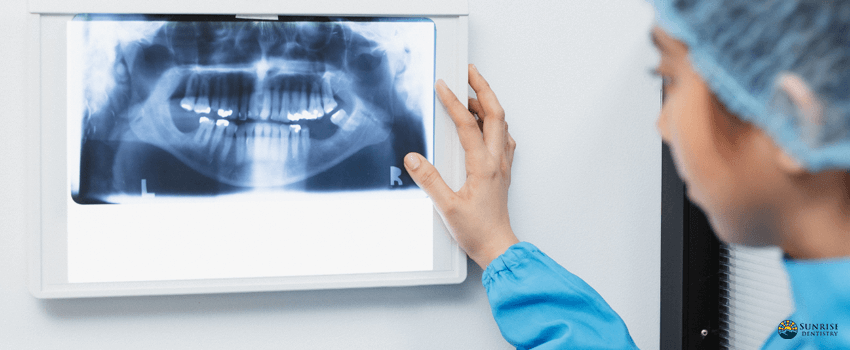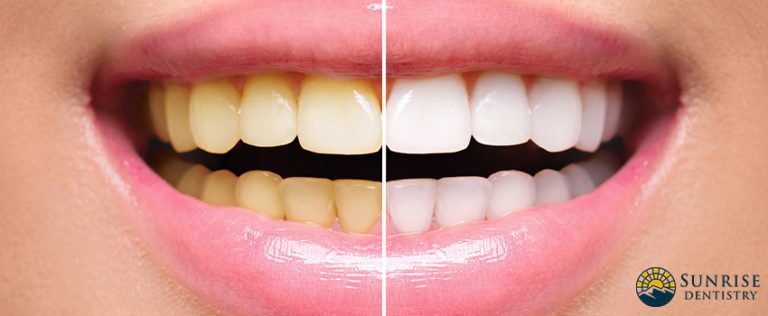Dentists often recommend first-time patients have an X-ray of their teeth to help them get a better picture of their patient’s oral health. They may even require you to have them more frequently if they’re monitoring your condition.
You probably feel a bit unsure about the safety of frequent X-rays. If you’ve had a traditional X-ray before, you’ll know that you need to wear all sorts of protection from radiation.
Not with digital X-rays.
Digital X-ray imaging is one of the most significant advances in dentistry today, and holistic dentists embrace them over traditional X-rays.
Why We Need Dental X-rays
Dental X-rays are usually taken every year. However, dentists may require you to have them more frequently if they’re monitoring a treatment or problem. Other factors affecting how often you need to have dental X-rays taken include:
- The appearance of oral disease symptoms
- Your age
- The current state of your oral health
- History of gum disease or tooth decay
You may also need a dental X-ray if you’re a new patient to help your dentist get a better picture of your oral health. This is crucial, especially if you don’t have any previously-taken X-rays with your previous dentist.
Children may need more frequent dental X-rays than adults to help dentists monitor their adult teeth. It helps them decide if they need to remove baby teeth to avoid complications.
What Is Digital X-ray?
Digital radiography in dentistry is a type of X-ray imaging that uses sensors instead of film to produce enhanced computer images of teeth, gums, and other oral structures and conditions.
Digital dental X-rays are acquired through indirect, direct, and semi-direct methods. The direct method involves an electronic sensor that a dentist places inside your mouth to record images. The indirect technique uses an X-ray film scanner to view images digitally. The semi-direct technique combines a scanner and sensor to convert dental x-rays into digital images.
Types of Digital Dental X-rays
Digital radiography in dentistry is taken inside or outside your mouth. They mostly take intraoral X-rays because they provide excellent detail. Extraoral X-rays aren’t as detailed as intraoral X-rays.
Still, they allow dentists to identify impacted teeth, monitor jaw development, and identify problems between the jaw, teeth, and facial bones.
The types of intraoral X-rays dentists include:
Bitewing X-rays
Dentists use bitewing X-rays to detect decay and bone, assess the fit of restorations and crowns, and evaluate the integrity of fillings. Bitewing X-rays show details of the upper and lower teeth in one part of the mouth, from the tooth’s crown down to its supporting bone.
Periapical X-rays
A periapical X-ray shows a complete tooth from the crown to the root tips and the supporting bone in the jaw. Dentists use them to identify abnormalities in the root structure and surrounding bone structures. They can also show bone loss around each tooth to help treat conditions like periodontitis and detect abscesses.
Types of extraoral X-rays include:
Panoramic X-rays
This type of X-ray shows the entire mouth, including the upper and lower teeth arch, in one image. They help dentists plan treatments for dental implants, diagnose bone tumors, and detect impacted wisdom teeth.
Cephalometric Projections
Cephalometric projections show the whole head, helping dentists to understand how a patient’s teeth relate to their profile and jaw. Orthodontists often use them to plan their treatments.
Sialography
Sialography involves injecting a dye into the salivary glands that make them visible on X-ray film. This imaging technique is often used to diagnose salivary gland problems.
Cone Beam Computerized Tomography (CBCT)
This imaging technique shows the body’s interior structure as a three-dimensional image. It helps diagnose facial bone problems like fractures and tumors. It also helps assess bones for dental implant placement and difficult teeth extractions to avoid complications after and during these procedures.
Why Digital X-rays Are Better Than Traditional X-rays
Digital imaging has many advantages over traditional imaging, which include the following:
Better Image Quality
Digital X-rays have better resolution than traditional X-rays and can access more angles of your mouth’s structures. Digital X-rays can show more shades of gray than traditional X-rays. This gives them more contrast, making it easier to detect any problems.
Aside from contrast, dentists or dental radiographers can easily adjust and change the colors and brightness of an image to highlight anatomical features. It also helps dentists find even the slightest problems, leading to earlier diagnosis and treatment.
More Comfortable Procedure
Digital imaging offers a more pleasant experience for patients anxious about visiting the dentist. You won’t need to wear the same lead protective covers that traditional X-rays require. Digital imaging also takes less time than traditional X-rays, where you have to sit still and bite down for a few minutes.
Safer
The sensors of a digital dental x-ray machine are more sensitive, requiring less exposure and radiation. Digital X-rays produce 80% less radiation than traditional radiography and are an excellent option for patients with complex dental issues that require frequent X-ray imaging.
Environment-friendly
Developing traditional X-rays requires film and chemicals that are toxic in large quantities. They often end up in the environment if they aren’t disposed of properly. They also come in many layers of packaging and protective wrapping that may end up in a landfill. Digital X-rays don’t need film or chemicals. They avoid toxic chemicals and produce less waste overall.
Better Patient Experience
Taking digital dental X-rays is faster than taking traditional X-rays. A computer screen can quickly display a digital image of your teeth as soon as it’s taken. This allows dentists to check their image quality and educate their patients.
Less Expensive
Digital X-rays are typically less expensive than traditional ones. Developing a traditional X-ray is more expensive due to its required materials and chemicals.
Key Takeaway
Digital X-ray is the go-to imaging modality of most holistic dentists. They provide better-quality images and give patients a better experience. Most digital X-ray techniques need less radiation and materials, making them safer for patients and the environment.
Experience quality holistic dental care at Sunrise Dentistry.
Our Pagosa Springs dentists provide holistic dental care that benefits your overall health. They also practice mercury-free dentistry that keeps their staff, patients, and the environment safe. Contact us today, and start your holistic dental journey.





